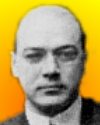
On 4 Sep 1922, Edward Spitzka died at age 46. He was an American anatomist and brain morphologist who assisted at the autopsy (29 Oct 1901) of the brain of Leon Franz Czolgosz, the assassin of U.S. president William McKinley. At the time, he was only in the fourth year of his medical training. Although he detected a few very minor variations in gyri and sulci patterns in the brain of Czolgosz, he reported in the New York Medical Journal(1902) that “nothing has been found in the brain of this assassin that would condone his crime.”
Four years later, his studies were the subject of an article in the New York Times, Looking for “The Face Within the Face” in Man, in which he discussed the latest phases of cerebral science, and that there was “No Such Thing as a ‘Criminal Brain Type.’” He was interviewed in his workshop, where about thirty brains were held, each in their own jar, swimming in a solution of formalin and salt. Though there were brains of some noted criminals among them, he said there was no way to distinguish those from the brain of a man of genius.
As you read this article, note the caution with which it begins, a paraphrase Mark Antony's famous invocation: “If you have brains, prepare to shed them now.”

On 4 Sep 1848, Lewis Howard Latimer was born, a distinguished Black American inventor who contributed to electrical technology. After serving in the Union navy, he returned to Boston, joined a patent law firm, taught himself drafting, and had such a talent that he evenutally became chief draftsman for that company. He assisted Alexander Graham Bell prepare patent drawings for his telephone invention patent (issued 7 Mar 1876). After a time working for Hiram Maxim, where he was introduced to the emerging technology of the electric light, Latimer shared a patent for the “incandescence of a continuous strip of carbon secured to metallic wires,” and held various other patents of his own. Today's book pick is: The Inventive Spirit of African Americans: Patented Ingenuity, by Patricia Carter Sluby, a former United States primary patent examiner, who pays homage to the inventive spirit of African Americans. Beginning with the contributions of enslaved Africans brought to American shores, Sluby introduces inventors and patent holders from all fields up to and including the leading edge of today's technology. Along with such recognizable figures as George Washington Carver and Madam C. J. Walker, readers will discover little-known or forgotten pioneers of devices such as a tobacco substitute, a home security system, and a portable heart monitor. Particular attention is given to the innovations of women inventors and scientists. She presents her painstaking research with a lucid writing style and explores the history of African American inventors and patent-holders as problem-solvers who turned obstacles into opportunities. After reading this book, you may be stimulated to research some of the inventors further.
It is available from Amazon, typically about New from $32.66. Used from $8.30. (As of earlier time of writing - subject to change.)
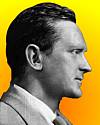 | Infectious disease is one of the few genuine adventures left in the world. The dragons are all dead and the lance grows rusty in the chimney corner. ... About the only sporting proposition that remains unimpaired by the relentless domestication of a once free-living human species is the war against those ferocious little fellow creatures, which lurk in dark corners and stalk us in the bodies of rats, mice and all kinds of domestic animals; which fly and crawl with the insects, and waylay us in our food and drink and even in our love |
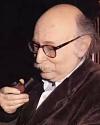 | It is sometimes important for science to know how to forget the things she is surest of. |
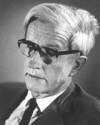 | Any living cell carries with it the experience of a billion years of experimentation by its ancestors. (1949) |
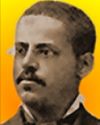 | We create our future, by well improving present opportunities: however few and small they be. |
| Before you look at today's web page, see if you can answer some of these questions about the events that happened on this day. Some of the names are very familiar. Others will likely stump you. Tickle your curiosity with these questions, then check your answers on today's web page. | |
| Births | |
 | Max Delbrück, born 4 Sep 1906, was a German-born U.S. biologist who was a pioneer in the study of molecular genetics. He was a co-recipient of the 1969 Nobel Prize for Physiology or Medicine. His work was on the replication mechanism and the genetic structure of bacteriophages, which serve as models for the more complex, less approachable cells of animals and humans. What is a bacteriophage? |
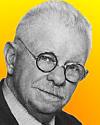 | On 4 Sep 1866, Simon Lake was born, who from 1886 built the Argonaut. With refitting, an over a period of several years, it travelled 2,000 miles. What was the Argonaut? |
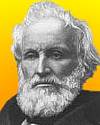 | On 4 Sep 1783, Frederic Tudor was born, who created an export trade in an unusual product. His first delivery left on 10 Feb 1806 from Boston to Martinique. He became known as the “King” of this trade, and after periods of debts later produced comfortable profits. What was his unusual export product? |
| Deaths | |
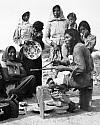 | William John McGee (1853-1912) was an American geologist and archaeologist who was noted for his pioneer studies of Pleistocene geology of the upper Mississippi River valley and the stratigraphy of the Atlantic Coastal Plain. What was the range in years for the Pleistocene? |
| Events | |
 | On 4 Sep 1951, the U.S. President inaugurated transcontinental television service in the U.S. when AT&T carried his address to the United Nations in San Francisco to viewers as far away as New England. Who was this president? |
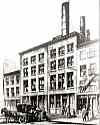 | On 4 Sep of a certain year, the first electric central station to supply light and power was the Edison Electric Illuminating Company of New York City. It had one generator which produced power for 800 electric light bulbs. What was the decade of this event? |
Fast answers for the previous newsletter for September 3: positron • hen's eggs • maize • Continuous production from pulp at one end of the machine to large finished paper rolls at the other. • Chile • Mersenne prime.
 If you enjoy this newsletter, the website, or wish to offer encouragement or ideas, please send feedback by using your mail reader Reply button.
If you enjoy this newsletter, the website, or wish to offer encouragement or ideas, please send feedback by using your mail reader Reply button. Your click on a Facebook, StumbleUpon, or other social button on the site webpages is also a welcome sign of appreciation. Thank you for using them.
© This newsletter is copyright 2020 by todayinsci.com. Please respect the Webmaster's wishes and do not put copies online of the Newsletter — or any Today in Science History webpage. (If you already have done so, please remove them. Thank you.) Offline use in education is encouraged such as a printout on a bulletin board, or projected for classroom viewing. Online, descriptive links to our pages are welcomed, as these will provide a reader with the most recent revisions, additions and/or corrections of a webpage. For any other copyright questions, please contact the Webmaster by using your mail reader Reply button.
--
If you do not want to receive any more newsletters, Unsubscribe
To update your preferences and to unsubscribe visit this link
Executive Real Estate Business Class
-
"It was like a man with wings. It wasn't like anything you'd see on TV or in a monster movie." ...
About the publisher
Search This Blog
Blog Archive
-
▼
2020
(1542)
-
▼
September
(173)
- SCIENCE: Just how big is Everest?
- The Latest News from History News Network
- On This Day for September 30 - Munich Agreement si...
- We are called to return to our foundational values...
- Newsletter for Wednesday 30 September.
- They Killed His Wife And Left Him For Dead – Then ...
- TRAVEL: Telling new truths about America’s histori...
- Make learning fun with Nat Geo Kids magazine! Subs...
- On This Day for September 29 - British mandate in ...
- Newsletter for Tuesday 29 September.
- Special Edition: Dinosaurs come to life like never...
- September 29: On This Day in History
- HISTORY: America's most endangered historic sites
- New This Week on History News Network
- On This Day for September 28 - California “discove...
- Newsletter for Monday 28 September.
- September 28: On This Day in History
- FAMILY: What do I tell my kids about wildfires and...
- On This Day for September 27 - Norman Conquest beg...
- Newsletter for Sunday 27 September.
- September 27: The Rosetta Stone, E=mc² and Fear as...
- The Compass: Indonesia
- On This Day for September 26 - First televised U.S...
- Newsletter for Saturday 26 September.
- September 26: Frances Drake's Circumnavigation, th...
- CORONAVIRUS UPDATE: Is this the end of the office?
- PHOTOGRAPHY: They feed us. Now we see them.
- The assassination of Lord Mountbatten | Enola Holm...
- 39,500-Year-Old Cave Bear Discovered Perfectly Pre...
- On This Day for September 25 - Pacific Ocean sight...
- The Roundup Top Ten for September 25, 2020
- Newsletter for Friday 25 September.
- September 25: Battle of Stamford Bridge, Remote Co...
- ANIMALS: These mighty elephants find peace
- On This Day for September 24 - Federal troops sent...
- Newsletter for Thursday 24 September.
- Global cartels taking control of the world + HPA B...
- September 24: Decline of the Byzantine Empire, Ope...
- YOUR WEEKLY ESCAPE: America's oldest mystery
- SCIENCE: How to cope with a big death toll
- The Latest News from History News Network
- On This Day for September 23 - Neptune observed, J...
- Newsletter for Wednesday 23 September.
- September 23: Nintendo, the Start of Data Processi...
- TRAVEL: How will America’s state parks survive?
- Matching gift opportunity for Sumatran rhinos
- On This Day for September 22 - Solidarity formed, ...
- Newsletter for Tuesday 22 September.
- September 22: Salem Witch Trials, Iraq's Invasion ...
- HISTORY: Who can replace RBG?
- Feed their curiosity! Get Nat Geo Kids magazine fo...
- New This Week on History News Network
- On This Day for September 21 - Joseph Smith's visi...
- Newsletter for Monday 21 September.
- September 21: France, China and a Sheep Shearing R...
- FAMILY: Don’t tell your kids outdated stuff about ...
- On This Day for September 20 - Rome incorporated i...
- Pro-life is not Politics + Vickie Travis's message...
- Newsletter for Sunday 20 September.
- September 20: Attila the Hun, Magellan's Circumnav...
- The Compass: Chile
- Matching gift opportunity for Sumatran rhinos
- On This Day for September 19 - George Washington's...
- Newsletter for Saturday 19 September.
- CORONAVIRUS UPDATE: Young people are spreading the...
- September 19: 1st Country to Grant Women the Right...
- PHOTOGRAPHY: How to make dinos look new (CORRECTED)
- Quick Note: How to Save Videos by Downloading
- PHOTOGRAPHY: How to make dinos look new
- The Mayflower | Medieval spiders | Ancient Egypt f...
- When She Found Out Her Boyfriend Was A Serial Kill...
- The Roundup Top Ten from History News Network
- On This Day for September 18 - Mukden seized by Ja...
- Newsletter for Friday 18 September.
- "Truth Crushes Evil" + We're Winding down + What ...
- YOUR WEEKLY ESCAPE: The country that doesn't exist
- September 18: Great Fire of Moscow, the CIA and El...
- ANIMALS: How U.S. officials stopped the flying squ...
- Two New Podcasts From HISTORY
- Don't miss out: back to school savings for learner...
- On This Day for September 17 - Camp David Accords ...
- Newsletter for Thursday 17 September.
- September 17: Bloodiest Day in the American Civil ...
- SCIENCE: He found part of a one-of-a-kind dinosaur
- SPECIAL REPORT: How the West is primed to burn
- The Latest News from History News Network
- On This Day for September 16 - Mayflower's departu...
- Newsletter for Wednesday 16 September.
- September 16: French Abolish Slavery, Malaysia For...
- TRAVEL: Will slowing down help you get stronger?
- Special Report: How do we end this pandemic?
- On This Day for September 15 - Central Americans g...
- Newsletter for Tuesday 15 September.
- September 15: Darwin Reaches the Galapagos, Penici...
- HISTORY: How the U.S. battled catastrophic wildfir...
- BREAKING NEWS: Possible evidence of life found on ...
- Discover Remarkable Leaders With Nat Geo History M...
- On This Day for September 14 - Mexico City capture...
- New This Week on History News Network
- Newsletter for Monday 14 September.
-
▼
September
(173)
-
Blogroll
-
About
HistoryFact










0 comments:
Post a Comment